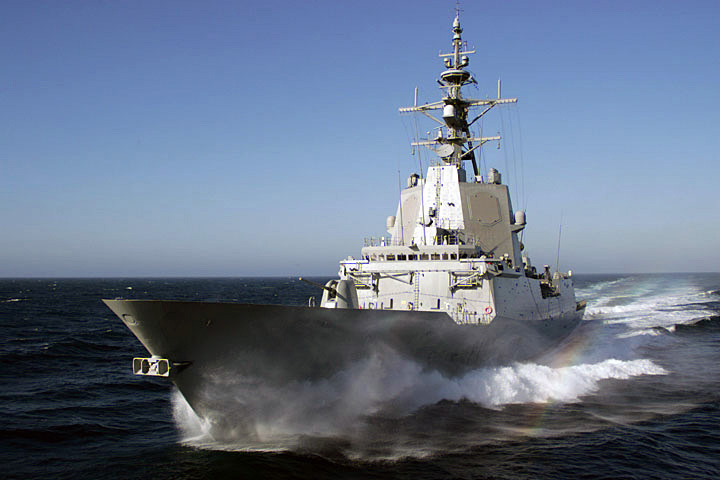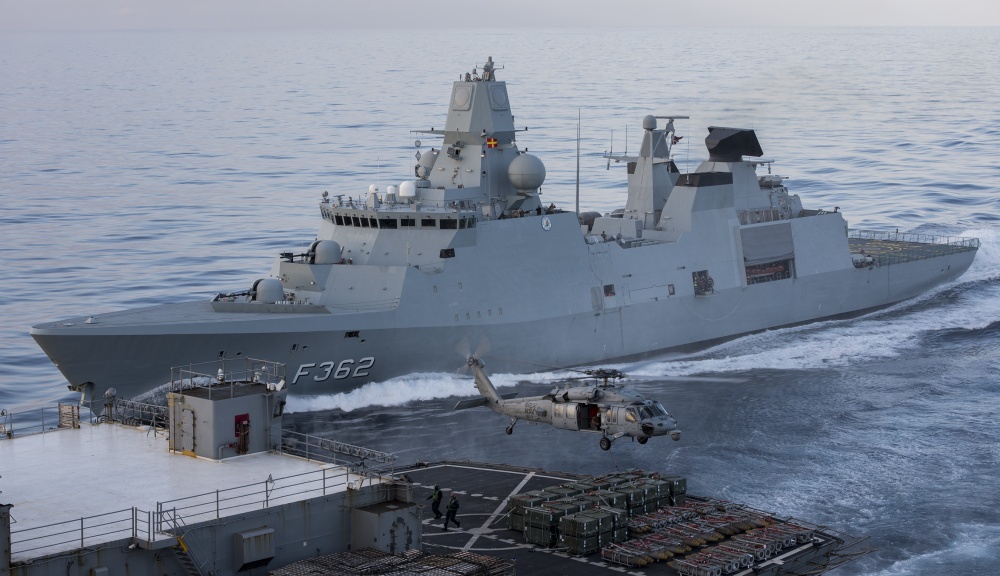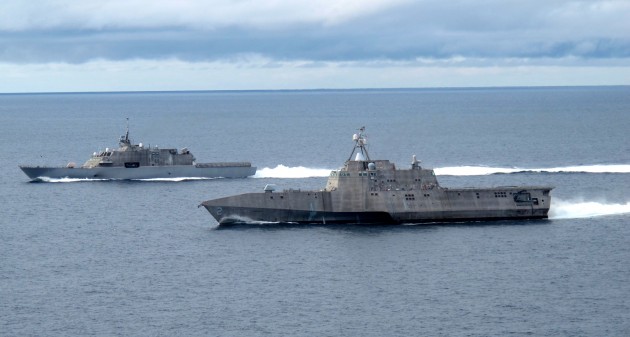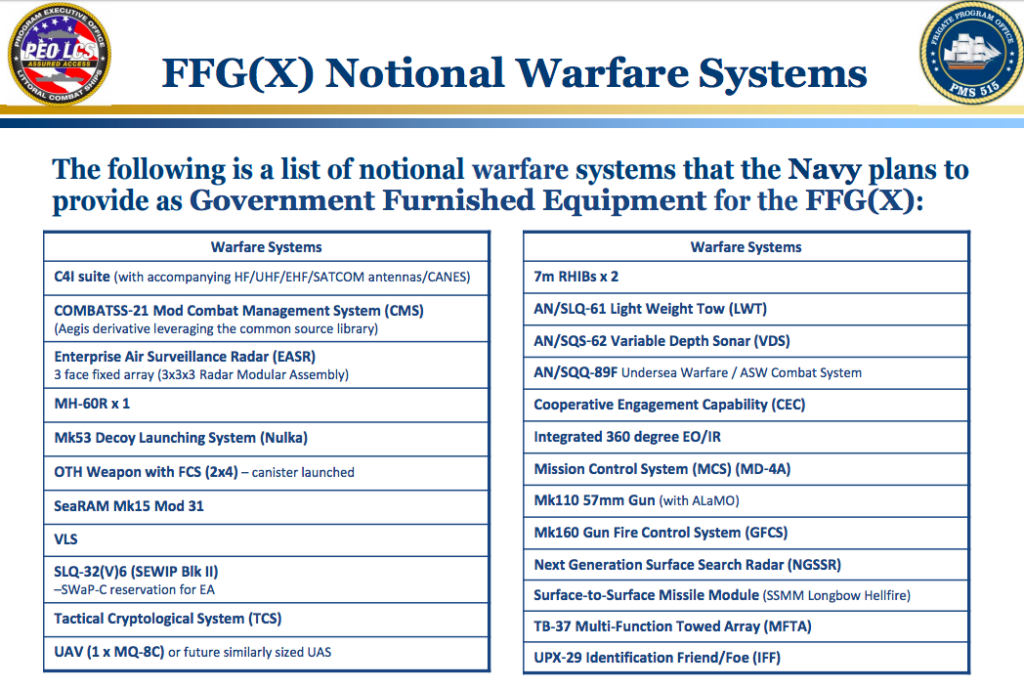
A Spanish F100-class frigate, Almirante Juan de Borbon, built by Navantia, is a possible contender for the US Navy contract.
SURFACE NAVY ASSOCIATION: The Navy’s frigate program is pioneering new procurement processes to get ships faster and cheaper. For the frigate, that means the cost should come in below the current target of $800 million, the program executive officer for small ships said here. (The maximum allowable cost per ship is $950 million). For the service as a whole, it’s a first step towards what the Navy’s new acquisition chief calls “a culture of affordability” — a culture without which the hoped-for 355-ship fleet won’t happen.

James “Hondo” Guerts
The overall goal is “driving to a 355-ship Navy,” said James “Hondo” Guerts, the newly confirmed Assistant Secretary of the Navy for Research, Development, and Acquisition. To get there, he said, “I’m not as focused on one single program as the culture of affordability.”
That said, “certainly, driving affordability in the frigate is going to be critically important,” Guerts told reporters at the annual Surface Naval Association conference yesterday. “I think competition will help us in that regard. I think our acquisition strategy of taking proven designs will help us in that regard. And so I’m optimistic about the affordability of that.”

The Danish “Stanflex” frigate Peter Willemoes during a joint deployment with the US Navy.
$950M? $800M? Less?
“The follow-on objective cost for FFG(X) is $800 million. We think we can get below that,” Rear Adm. John Neagley told the conference. Once conceptual design contracts are awarded — no later than March — “we’re going to use the next 16 months to work with our industry partners to really understand those details.”
The $800 million figure is the Navy’s target (“objective”) for the average cost of frigates No. 2 through 20 (the “follow-on” ships). The $950 million figure widely reported this week is the maximum average cost the Navy will accept for those same ships. Neither number includes the very first frigate, since the lead ship of a class has lots of extra costs: the initial development and design, setting up manufacturing facilities, and working out all sorts of teething troubles.

Rear Adm. John Neagley
Neagley declined to offer any kind of cost estimate for that lead ship. There’ll be a first-take figure in the 2019-2023 budget plan released in February, he said, but that’s effectively a placeholder and may change as the program explores different designs and how to build them.
“We’re working with industry to understand that,” Neagley said. “That’s precisely why we laid out the strategy the way did — to engage industry early on this.”
Starting with a Request For Information last summer, the frigate program brought in potential shipbuilders to discuss the state of the art and the limits of what was possible. There was also “the greatest level of coordination, cooperation I’ve seen” within the Navy, Neagley said, between the various bureaucracies responsible for requirements (i.e. what the ship must do), resources (i.e. money), and procurement (i.e. actually buying the ship), as well as the eventual end users in the fleet. The goal of all this internal and external information-sharing was to refine the Navy’s requirements to something industry could actually build on schedule and on budget.
The service is now reviewing proposals from many strong contenders, Neagley said, all based on proven designs in US or allied service. (The Navy wouldn’t name them at this stage). That’s the field of competitors Guerts is hoping will help keep the cost down.

The two Littoral Combat Ship variants, LCS-1 Freedom (far) and LCS-2 Independence (near).
Commonality
One way they think they can save is commonality. No matter which design wins, the frigate will carry a long list of standard Navy equipment, provided as Government Furnished Equipment (GFE). The goal is to reduce both procurement costs — since the Navy’s already buying this stuff in bulk — and operations costs — since the training, maintenance, and spare parts systems are already set up.
Commonality is something the Navy’s generally good at, said Guerts: “I’ve been pleasantly surprised by the thoughtful use of similar combat systems across a variety of combat platforms.” But it wasn’t pursued in the frigate’s predecessor program, the Littoral Combat Ship, which exists in two variants, each with some unique equipment. Accommodating all this US equipment will also pose a challenge for foreign designs.

Conversely, the LCS-derived designs may have an advantage. The frigate is required to use the same Over-The-Horizon Missile, Longbow Hellfire missile launcher, 57mm gun, and Variable Depth Sonar already installed on or slated for the LCS, for example. It will also use the same COMBATSS-21 control system as the Lockheed Martin Freedom LCS (the Austal Independence system is different), which in turn derives from Lockheed’s Aegis used on Navy cruisers and destroyers. The frigate will also use the Enterprise Air Surveillance Radar (EASR), used on aircraft carriers and amphibious ships (although not LCS), which is a scaled-down version of the AMDR radar going on future Arleigh Burke Flight III destroyers.
The frigate will also have space, weight, and power available to carry future weapons such as lasers, Neagley said. In fact, the Navy is already sketching out future block upgrades, said Rear Adm. Ronald Boxall, the service’s director of surface warfare.
Looking even further ahead, said the Navy’s senior uniformed acquisition officer said the frigate acquisition will be a model for the next-generation Future Surface Combatant to replace current cruisers and destroyers. Bringing industry, acquisition officials, and requirements staff together to thrash out costs and benefits early on is essential, said Vice Adm. David Johnson: “That’s the way we go fast.”
Questions hang over UK’s new, ambitious defense spending plan: Analysts
Such is the scale of British Army acquisition problems alone that they could not be resolved if the UK moved to a long term spending settlement of even 4 percent GDP, an expert told British lawmakers.


























